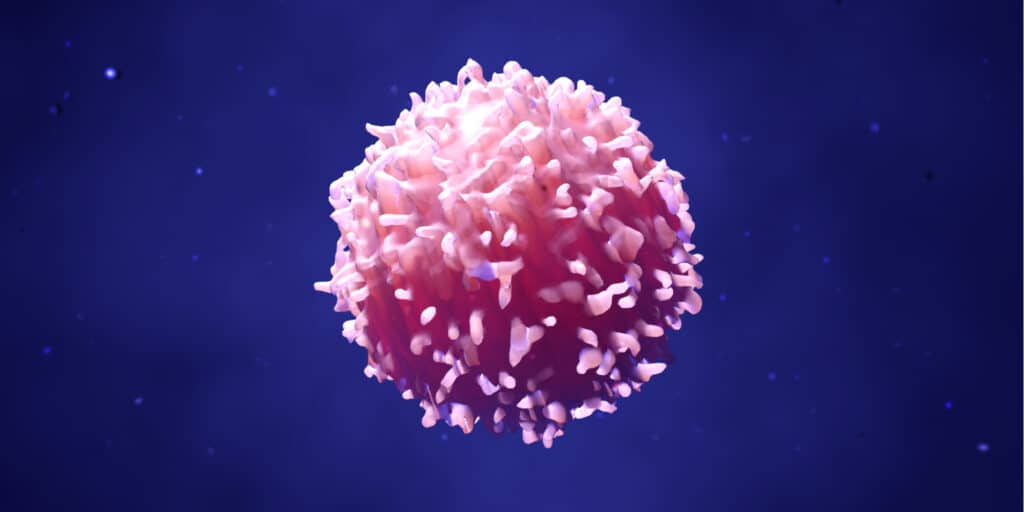A recent study published in Nature Communications has found that a new, drug-releasing biodegradable hydrogel could help keep cancer from returning after surgery. The findings were conducted by researchers at the University of Wisconsin-Madison, who say they have successfully demonstrated slower tumor growth post-surgery in early trials. To better understand the potential implications of this study, let’s take a closer look at how this gel works, and what it could mean for future cancer treatment.
What Is This Biodegradable Gel Made Of?

The gel, which was tested on mice, works by releasing a mixture of drugs and special antibodies. This concoction of cancer-fighting chemicals simultaneously depletes immune-blocking cells, known as macrophages, from the surgical site and activates T cells so they can attack cancer.
The first of these compounds used to make the biodegradable gel is a drug called Pexidartinib, which is already used to inhibit tumor-associated macrophages (TAMs). These are immune cells that have, for unclear reasons, “switched sides” and now contribute to creating a pro-cancer environment. As such, inhibiting these TAMs slows the growth (or regrowth) of cancer.
The second part of the gel was made up of antibodies known as PD-1 antibodies, which help train T cells to properly recognize and attack cancer cells. To achieve stability, these antibodies are bound to platelets. Together, these two components prevent the formation of a microenvironment that’s favorable to cancer growth and help the immune system clear out any cancer cells remaining after surgery. After its work is done, the gel is designed to biodegrade safely in the body.
How a Biodegradable Gel Could Help Slow Tumor Growth
The experiments were led by the lab of Quanyin Hu, a professor in the UW-Madison School of Pharmacy, with support from pharmacy professor Seungpyo Hong and colleagues in the UW School of Medicine and Public Health.
The UW-Madison researchers tested the new biodegradable gel on mice with several different types of cancer, including colon cancer, melanoma, sarcoma, and triple-negative breast cancer. The inclusion of these different types of cancer was extremely important. According to Hu, these tumors vary in how they respond to immune-based therapies like the anti-PD-1-conjugated platelets. For example, certain tumors like those caused by colon cancer, are known to respond well to this kind of immune therapy. However, melanomas, sarcomas, and triple-negative breast cancer tumors are all less responsive to immune therapy and more likely to metastasize.
When tested on the mice, the gel significantly reduced recurrence and metastasis of all cancers, and extended the survival rates of the mice – all control animals succumbed within 36 days, while survival rates ranged between 50 and 66 percent for treated mice, depending on the type of cancer.
The local application of the gel also helped prevent side effects that typically arise if a drug is delivered system-wide. As such, no major side effects were seen in the test mice.
“We are really glad to see that this local strategy can work against so many different kinds of tumors, especially these non-immunogenic tumors,” says Hu. “We are even more glad to see this local treatment can inhibit tumor metastasis.”
But, what does this mean for future cancer treatments? Let’s take a closer look.
What Next?


Surgery is an excellent, and common, treatment for many cancerous tumors. However, after surgery, small numbers of cancer cells can remain once the operation is completed. This can allow the tumors to grow back, and cause a patient to become ill again. To counteract this process, Hu and his team at UW-Madison turned their attention toward post-operative measures like their new, cancer-fighting biodegradable gel.
The researchers hoped that the local release of the antibody-bound platelets and Pexidartinib would both maximize their effect near the tumor site and minimize side effects that occur when these therapies are given intravenously and circulate widely in the body. As reflected in their early findings, the gel did just that. Not only did it slow tumor growth, but it was also able to be broken down and processed by the body.
It’s important to note that while these early trials have shown promising results, they have only been tested on mice in a controlled environment, and have yet to move to human trials. However, results such as these are still groundbreaking, and with more research could help pave the way toward new, innovative ways to treat cancer.
In recent years, Hong and Hu have independently been developing new ways to control cancers without traditional chemotherapy, which has severe side effects. Now collaborating, they plan to continue testing creative approaches that could find their way into human patients in the coming years.
“This is just the initial phase of collaboration between our two labs,” says Hong.
Have You Heard of this Biodegradable Gel?
Let us know your thoughts in the comments below!
What topics related to cancer treatment should we cover next?
Email us your ideas at info@painresource.com!
Want to stay up to date on the latest medical breaking news?




